Born in Castlemaine on 11 February 1898, William Elliott Gower was
the second son of Frederick Oscar Gower (1869-1934) and the former
Elizabeth Elliott (1870-1953). For many years, the family lived in Ballarat,
where Frederick and his younger brother John ran a successful business as
building contractors. A teenaged William Gower studied art and technology at the
Ballarat School of Mines before moving to Melbourne, where he became
an articled pupil of S C Brittingham, Chief Architect of the Public
Works Department. Following a brief stint in the office of
Walter Butler, Goweer took a position in the
architectural section of the newly-formed State Electricity
Commission (SEC), where he would remain for almost 45 years.
At the time that Gower joined up in 1919, the SEC was principally involved in the development of brown coal mines in Victoria's Latrobe Valley area, and its architectural section became responsible for the design and construction of an entire planned township, Yallourn, for the accommodation of mining staff. Working under Alfred Romeo La Gerche (1873-1948), who was Chief Architect to the SEC, Gower and his colleagues were involved not only in the layout of the township itself but also the design of virtually all of the buildings therein, from individual dwellings through to administrative offices and commercial facilities. Amongst the structures for which Gower can take design credit were a memorial to Sir John Monash, an alpine hut, and the new township's picture theatre. The last of these projects was widely published at the time and later caught the attention of a young Robin Boyd, who praised it in the pages of his first book, Victorian Modern (1947).
While merely one of several underling architects employed by the SEC, Gower appears to have risen above his colleagues and found especial favor with his boss, Alfred La Gerche. During the 1920s, and quite separate from their SEC output, Gower and La Gerche collaborated on entries in several high-profile design competitions across the country. Their record was impressive: they won first prize for their scheme for the new Spencer Street Bridge (1925), second prize for the Anglican Cathedral in Canberra (1928) and a commendation in the competition for the Australian War Memorial (1927). Gower and La Gerche are also known to have collaborated on at least one private residential commission, for a house in Yarradale Road, Toorak (1935). Aside from that, Gower's work outside the SEC appears to have been limited to dwellings for his own occupation: a townhouse in East Melbourne (1936) and an existenzminimum weekender in Shoreham (1938). Both were published; as had been the case with the Yallourn Theatre, Gower's holiday house would later be illustrated in Robin Boyd's Victorian Modern.
Following the retirement of Alfred La Gerche in August 1938, Gower succeeded him to the plumb position of Chief Architect to the SEC. He would hold that post for the next twenty-three years.
That period saw further expansion and development of the Yallourn township, which was effectively completed in 1961. Aside from overseeing the design of many new buildings including several hundred houses, three hostels, a kindergarten and an infant welfare centre, Gower also collaborated with leading architect/town planner Frank Heath on an interim regional survey and report on future development in the entire LaTrobe Valley region, which was published in 1948.
During the post-war era, Gower also maintained a private practice under the name of Gower & Associates. However, aside from a couple of private residential commissions, little is known of his work in this capacity. His most prominent outing in the 1950s was as part of a panel of leading Melbourne architects engaged to enliven central Melbourne with street decorations during the Olympic Games fortnight. The elder statesman amongst the panel members (who also included Peter McIntyre, John Murphy and John Mockridge), Gower contributed two contrasting schemes. One, referred to as the Gum Leaf Pylons, comprised a pair of metal-framed structures flanking the corner of Victoria Parade and Nicholson Street. The other, apparently unnamed, was a roped screen that stretched across the intersection of Bourke and Russell Streets, depicting abstracted human figures reportedly based on traditional Aboriginal motifs.
For all his professional success, Gower seems to have suffered from a troubled private life. He married for the first time, to Marguerite Nancy Tuckett, on 22 January 1921. The couple, who had three daughters, resided in Glenhuntly for some years. However, Gower's wife had vanished from his life by the mid-1930s, when he moved into his new house in East Melbourne. In December 1938, he was granted a divorce on the grounds of desertion. Gower married for the second time in 1941, to Boneitta Darby Smith (1911-1991), a minor stage actress, theatrical producer and drama teacher. The couple took up residence in Hawthorn, in a riverside house at the far end of Hambledon Road. Their only child together, a son, died in infancy in 1945.
After retiring from the SEC on 30 June 1963, Gower remained living in Hawthorn with his wife, initially in Hambledon Road and then, by the early 1970s, in a flat in Berkeley Street. Towards the end of the decade, the couple relocated to Sorrento on the Mornington Peninsula. After his wife's death in 1991, Gower moved into a retirement home in Rosebud, where he died on 7 March 1995, barely a month after his 97th birthday. Gower was survived by the three daughters from his first marriage, two of whom were disinherited for failing to keep in contact with him.
At the time of his death, Bill Gower was almost certainly the last surviving Melbourne architect to have begun his career prior to the First World War. Yet, despite his longevity, little evidence now remains of Gower's legacy. Many of the building that he designed for the SEC have since been demolished and most notably the entire township of Yallourn, which was razed between 1975 and 1981 to allow access to the brown coal deposits beneath. A rare survivor is the war memorial that formerly stood in the town's square, which was relocated to a new site in nearby Newborough.
At the time that Gower joined up in 1919, the SEC was principally involved in the development of brown coal mines in Victoria's Latrobe Valley area, and its architectural section became responsible for the design and construction of an entire planned township, Yallourn, for the accommodation of mining staff. Working under Alfred Romeo La Gerche (1873-1948), who was Chief Architect to the SEC, Gower and his colleagues were involved not only in the layout of the township itself but also the design of virtually all of the buildings therein, from individual dwellings through to administrative offices and commercial facilities. Amongst the structures for which Gower can take design credit were a memorial to Sir John Monash, an alpine hut, and the new township's picture theatre. The last of these projects was widely published at the time and later caught the attention of a young Robin Boyd, who praised it in the pages of his first book, Victorian Modern (1947).
While merely one of several underling architects employed by the SEC, Gower appears to have risen above his colleagues and found especial favor with his boss, Alfred La Gerche. During the 1920s, and quite separate from their SEC output, Gower and La Gerche collaborated on entries in several high-profile design competitions across the country. Their record was impressive: they won first prize for their scheme for the new Spencer Street Bridge (1925), second prize for the Anglican Cathedral in Canberra (1928) and a commendation in the competition for the Australian War Memorial (1927). Gower and La Gerche are also known to have collaborated on at least one private residential commission, for a house in Yarradale Road, Toorak (1935). Aside from that, Gower's work outside the SEC appears to have been limited to dwellings for his own occupation: a townhouse in East Melbourne (1936) and an existenzminimum weekender in Shoreham (1938). Both were published; as had been the case with the Yallourn Theatre, Gower's holiday house would later be illustrated in Robin Boyd's Victorian Modern.
Following the retirement of Alfred La Gerche in August 1938, Gower succeeded him to the plumb position of Chief Architect to the SEC. He would hold that post for the next twenty-three years.
That period saw further expansion and development of the Yallourn township, which was effectively completed in 1961. Aside from overseeing the design of many new buildings including several hundred houses, three hostels, a kindergarten and an infant welfare centre, Gower also collaborated with leading architect/town planner Frank Heath on an interim regional survey and report on future development in the entire LaTrobe Valley region, which was published in 1948.
During the post-war era, Gower also maintained a private practice under the name of Gower & Associates. However, aside from a couple of private residential commissions, little is known of his work in this capacity. His most prominent outing in the 1950s was as part of a panel of leading Melbourne architects engaged to enliven central Melbourne with street decorations during the Olympic Games fortnight. The elder statesman amongst the panel members (who also included Peter McIntyre, John Murphy and John Mockridge), Gower contributed two contrasting schemes. One, referred to as the Gum Leaf Pylons, comprised a pair of metal-framed structures flanking the corner of Victoria Parade and Nicholson Street. The other, apparently unnamed, was a roped screen that stretched across the intersection of Bourke and Russell Streets, depicting abstracted human figures reportedly based on traditional Aboriginal motifs.
For all his professional success, Gower seems to have suffered from a troubled private life. He married for the first time, to Marguerite Nancy Tuckett, on 22 January 1921. The couple, who had three daughters, resided in Glenhuntly for some years. However, Gower's wife had vanished from his life by the mid-1930s, when he moved into his new house in East Melbourne. In December 1938, he was granted a divorce on the grounds of desertion. Gower married for the second time in 1941, to Boneitta Darby Smith (1911-1991), a minor stage actress, theatrical producer and drama teacher. The couple took up residence in Hawthorn, in a riverside house at the far end of Hambledon Road. Their only child together, a son, died in infancy in 1945.
After retiring from the SEC on 30 June 1963, Gower remained living in Hawthorn with his wife, initially in Hambledon Road and then, by the early 1970s, in a flat in Berkeley Street. Towards the end of the decade, the couple relocated to Sorrento on the Mornington Peninsula. After his wife's death in 1991, Gower moved into a retirement home in Rosebud, where he died on 7 March 1995, barely a month after his 97th birthday. Gower was survived by the three daughters from his first marriage, two of whom were disinherited for failing to keep in contact with him.
At the time of his death, Bill Gower was almost certainly the last surviving Melbourne architect to have begun his career prior to the First World War. Yet, despite his longevity, little evidence now remains of Gower's legacy. Many of the building that he designed for the SEC have since been demolished and most notably the entire township of Yallourn, which was razed between 1975 and 1981 to allow access to the brown coal deposits beneath. A rare survivor is the war memorial that formerly stood in the town's square, which was relocated to a new site in nearby Newborough.
Select List of Projects
Projects undertaken within the SEC
| 1932 1939 1946 1947 1949 1953 | Sir John Monash Memorial, Yallourn [with A R La Gerche and sculptor Paul Montford] Alpine hut for Kiewa Hydro-Electric Scheme, Wallace Gap [destroyed by fire, 2004] Yallourn Theatre, MOnash Square, Yallourn Office building for SEC (Briquette Production Dept), Church Street, Richmond Kindergarten for Yallourn Community Kindergarten Association, Yallourn Hostel for single men, Eastern Road, Yallourn Staff housing, Yallourn Infant Welfare and Pre-Natal Centre, Yallourn War Memorial, Monash Square, Yallourn [with sculptor Andor Meszaros] |
Projects undertaken outside the SEC
| 1919 1923 1924 1925 1927 1928 1933 1935 1936 1938 1950 1956 | Housing scheme, Rushcutter's Bay, Sydney, NSW [competition entry] Residence and surgery, Park Street, South Melbourne Administrative building, Canberra [competition entry; with A R La Gerche] Spencer Street Bridge, Melbourne [competition entry; with A R La Gerche] Australian War Memorial, Canberra [competition entry; with A R La Gerche] Church of England Cathedral, Canberra [competition entry; with A R La Gerche] Littlejohn Memorial Chapel, Scotch College, Hawthorn [competition entry] Residence, Yarradale Road, Toorak [with A R La Gerche] Residence for self, 54 George Street, East Melbourne Holiday residence for self, Shoreham Residence, Kew Street decorations for Olympic Games, Melbourne |
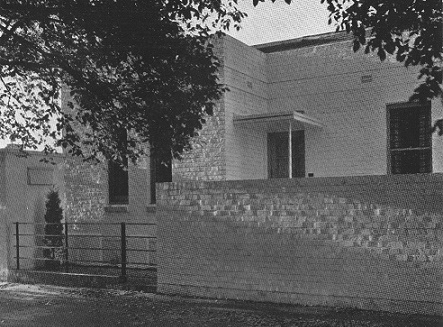 | |
| Gower Residence, George Street, East Melbourne (1936) |
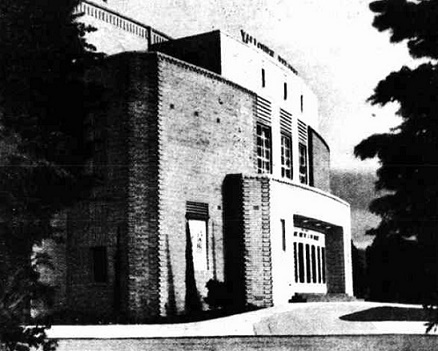 | |
| Exterior of Yallourn Theatre, Yallourn (1938) |
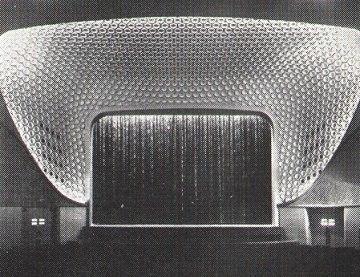 | |
| Interior of Yallourn Theatre, Yallourn (1938) |
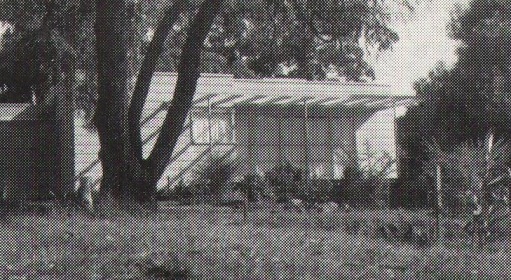 | |
| Gower Holiday Residence, Shoreham (1938) |
 | |
| SEC staff housing at Yallourn (1947) |
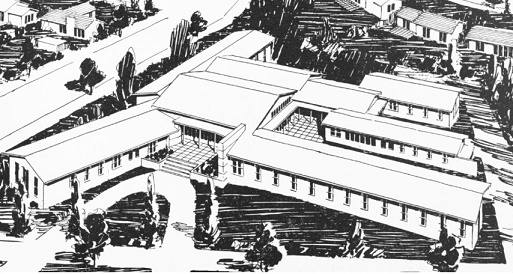 | |
| SEC Hostel for Single Men, Yallourn (1947) |
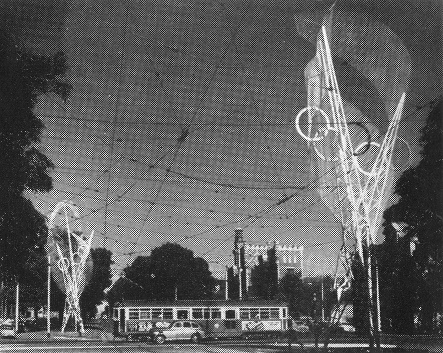 | |
| Gum Leaf Pylons erected for the Olympic Games (1956) |
